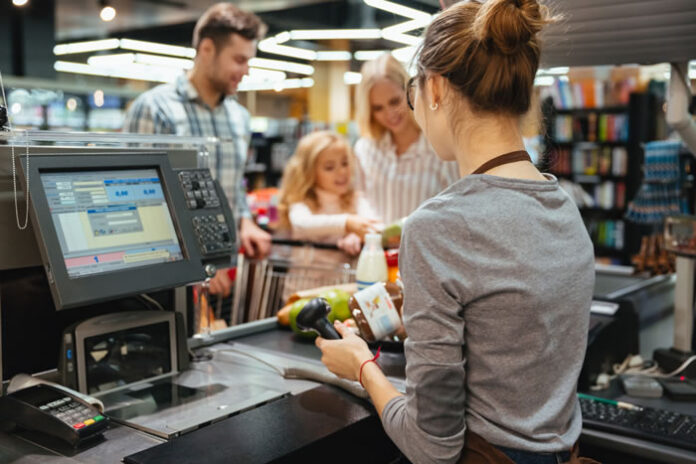The COVID-19 pandemic didn’t kill retail, but restaurants and retailers that did not bend with the times broke. Shoppers that once browsed aisles instead scrolled pages. Along with consumers’ shift to online shopping, brick-and-mortar stores struggled to make ends meet. In fact, even before the pandemic, the brick-and-mortar retail industry was in the midst of a retail apocalypse. To say the past few years have been difficult for brick-and-mortar would be an understatement.
While consumers are gradually returning to in-location shopping again, brick-and-mortar retailers still need to keep up with the rapidly changing advancements of the modern shopping era. While eCommerce remains a key channel, Raydiant’s State of Consumer Behavior 2022 report found that 44% of shoppers still prefer the in-store experience, meaning embracing in-store modernization is more critical than ever. Some companies will ride the digital advancement wave, whereas others will be swept downstream. In order to establish themselves as leaders in the future of retail and keep up with the modern-day shopper, brick-and-mortar businesses must adopt these four essential strategies.
Contactless payments
As the pandemic unfolded and digital transformation accelerated across industries, shoppers grew more accustomed to contactless payments. Data from Mastercard affirms what we’ve been witnessing: Eight in 10 consumers say they are using contactless methods due to safety and cleanliness concerns, and three-quarters will continue to use contactless post-pandemic. And the Credit Union National Association suggests that contactless cards are ten times faster than other payment methods.
But even as contactless checkout becomes the preferred method for most shoppers, companies run a significant risk if they fail to provide a fast, high-quality checkout experience.
Interactive self-checkout kiosks
With self-checkout kiosks, consumers can conveniently finalize their purchases without interacting with a cashier. Exacerbated by the pandemic, the past couple of years saw a spike in self-checkout usage. Even now, many customers demand the relative safety and convenience of checking out on their own. A recent survey from Shekel found that 87% of respondents said they would prefer to shop in retail stores with touchless or robust self-checkout options.
The versatility of self-service checkout kiosks may likely be its greatest appeal. While its primary purpose is to secure customer payment, it can also communicate compelling brand messaging. These kiosks provide a direct channel to connect with and upsell customers, promote exclusive offers and communicate pertinent updates.
This technology is no longer a futuristic pipe dream. The odds are that companies already have self-checkout options or will offer them in the near future. Offering self-checkout may be a basic necessity for any business to remain truly competitive in the physical-location marketplace.
Digital signage
Does paper signage answer customers’ frequent questions? Does it help them find their way around the store? Does it keep them informed about new products, updates and sales? These are questions businesses that do not embrace digital signage need to ask. While the short answer may be: “yes” – paper signage doesn’t allow a business to adapt quickly, not to mention it’s far less sustainable. And while paper signage as an initial capital output is less expensive than digital signage, the signs – while limited in the amount of information they can convey – will quickly become outdated, causing a massive overhaul of current displays and a bigger hit to the pocketbook.
Versatility is one of the appeals of digital signage, with the ability to convey unique messages to various customer segments at different times of the day. Its form can take a static, non-interactive image, or it can be a fully interactive menu, real-time map or FAQ database. A digital sign is another employee on the floor, introducing new products or menu items, informing customers about special events or inviting customers to join the loyalty program.
Omnichannel approach
Offering only traditional in-store service was a recipe for disaster as the pandemic unfolded. Organizations that failed to work within civil mandates and customer preferences quickly went under. According to Sensor Tower, downloads of brick-and-mortar retail apps increased by 27% in 2020, indicating consumers embraced alternative purchasing methods from brick-and-mortar stores.
While online commerce is also growing, it accounts for only one-fifth of all retail sales, per Digital Commerce 360. The experience of in-store shopping draws shoppers to brick-and-mortar retail locations. Online alternatives simply cannot recreate all the sensory or interpersonal experiences in-store shopping offers. In that regard, brick-and-mortar is still king.
Implementing these strategies to digitize brick-and-mortar stores allows businesses to personalize their customer experience. Technology – like what we’re building at Raydiant – can help companies acquire, analyze and leverage data to deliver memorable shopper experiences. In a time when retailers have to be more flexible than ever, their tools should follow suit.
















